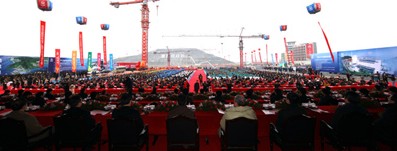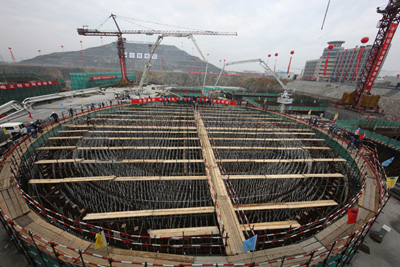
Work on two new nuclear power reactors was inaugurated on 26 December - just 11 days after a ceremony for the start of work on six other units.
The latest units to officially enter the construction phase are at Fangjiashan, near the existing Qinshan nuclear power plant in Zhejiang province.
That region of China, which borders the Shanghai municipality on the country's east coast, has a population of over 47 million but is short of energy resources. Dignitaries attending the 26 December 'first concrete' ceremony praised the contribution already made by the five reactors at Qinshan as promoting economic and social development.
The latest project will see two CPR-1000 reactors provide another 2160 MWe. The dates scheduled for the start of their commercial operation are December 2013 and October 2014.

Nuclear power production started at Qinshan in 1994 with the operation of a relatively small 279 MWe domestically-designed reactor. Four more units - two of 610 MWe and two of 665 MWe - started up between 2002 and 2004, and another two of 650 MWe are under construction at the moment.By 2014, when the adjacent Fangjiashang units start, the 'Qinshan Base' will boast nine reactors and around 6300 MWe of nuclear capacity.
China National Nuclear Corporation, which has the task of implementing the mass deployment of CPR-1000s, said this project would have 'far-reaching significance' and an 'irreplacable role of demonstration' for future nuclear plans. CNNC said the total cost of the project would be 26 billion yuan ($3.8 billion), which equates to $1760 per kWe, slightly more than the $1565 recently quoted for the six-reactor Yangjiang plant.
There are currently 439 nuclear power reactors operating worldwide, with 11 of these in China. Ten new Chinese units are now under construction, and by 2020 Chinese planners expect to have around 60 GWe in nuclear capacity - a total of about about 55 reactors. By 2030, some 130 GWe could be sourced from around 100 reactors.




_18570.jpg)
_16159.jpg)
_49205.jpg)
_18938.jpg)





